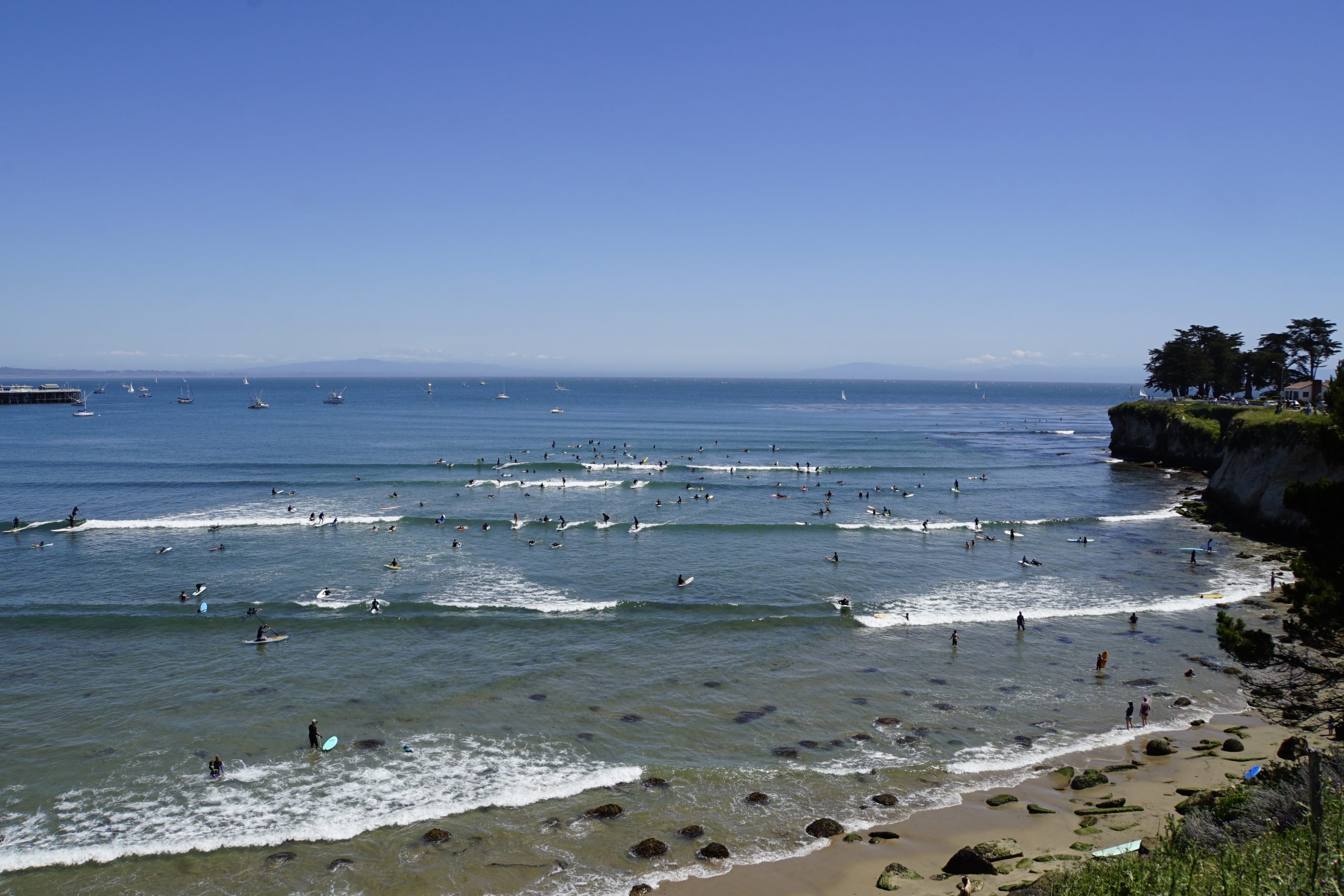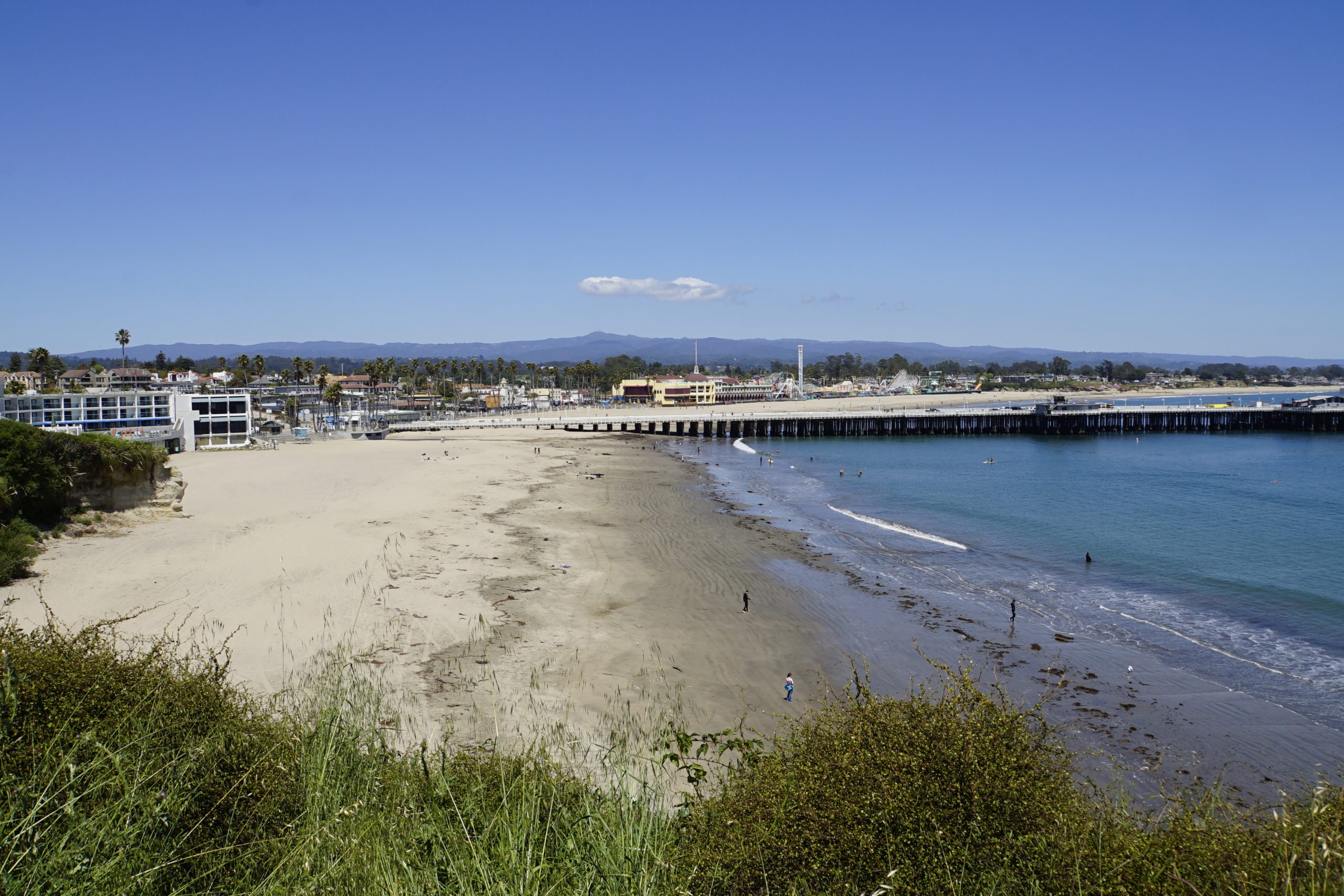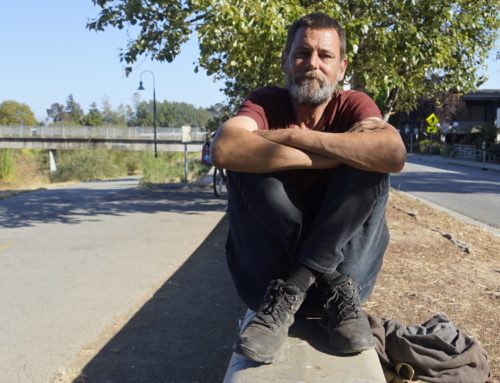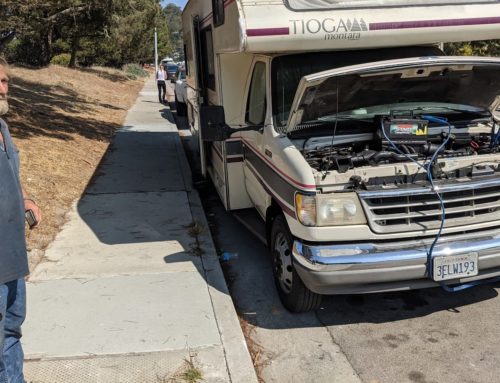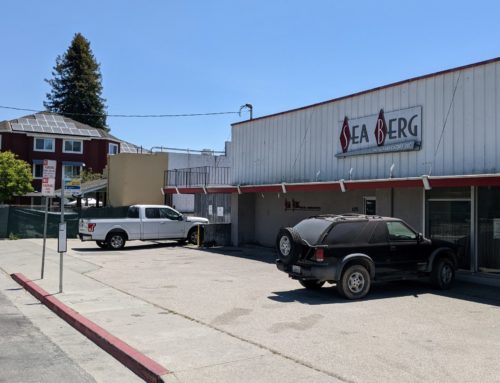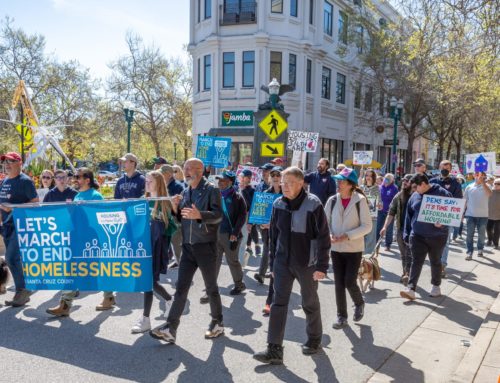Santa Cruz County’s health officer limited beach hours and hotel visitors in her latest revision to the COVID-19 shelter order. How deep are the county’s economic problems, with the prospect of far fewer tourists? How do shelter orders impact a county where the largest share of jobs are in leisure and hospitality? We hear from California economist Chris Thornberg and Santa Cruz County Chamber of Commerce CEO Casey Beyer.
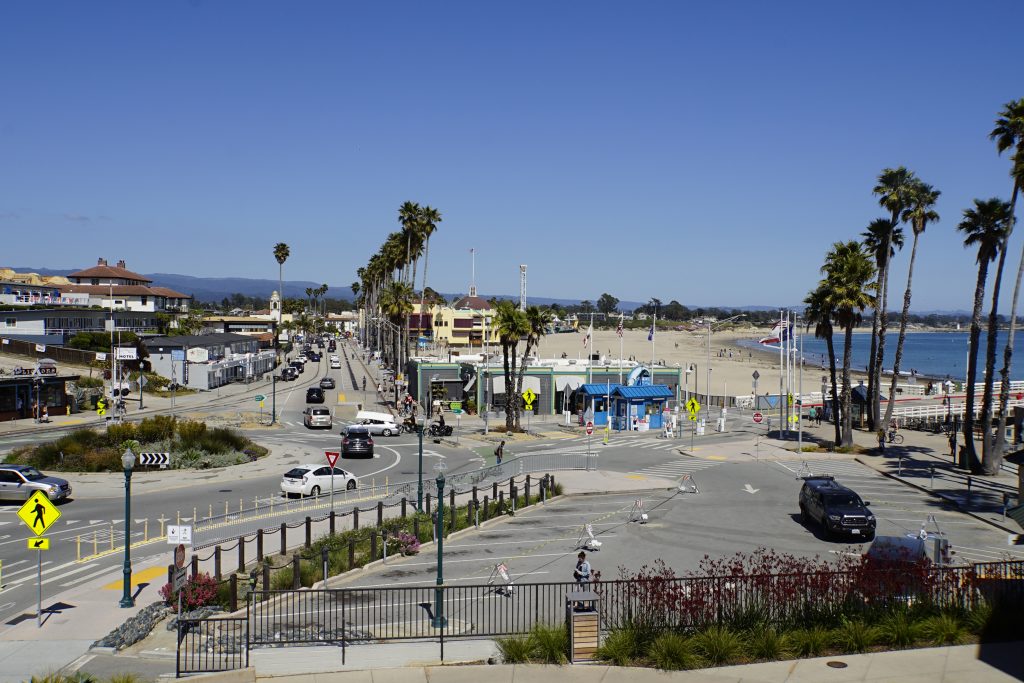
TRANSCRIPT
Transcripts are usually only available to members. We offer coronavirus-related transcripts free as a public service. We invite you to become a Santa Cruz Local member, so everyone in our community can access fair and accurate local journalism.
[INTRO MUSIC]
STEPHEN BAXTER: I’m Stephen Baxter.
KARA MEYBERG GUZMAN: And I’m Kara Meyberg Guzman.
SB: This is Santa Cruz Local.
[MUSIC FADE OUT]
SB: Last week, Santa Cruz County Health Officer Dr. Gail Newel issued an updated shelter-at-home order. It loosened restrictions on industries like construction and health care.
DR. GAIL NEWEL: We as a community have done so well at our sheltering-in-place efforts, that we’ve seen a fantastic lengthening of our doubling time and flattening of our curves. And so I want the community to hear very clearly that they’re doing a fantastic job and as a result, we can open up some activity.
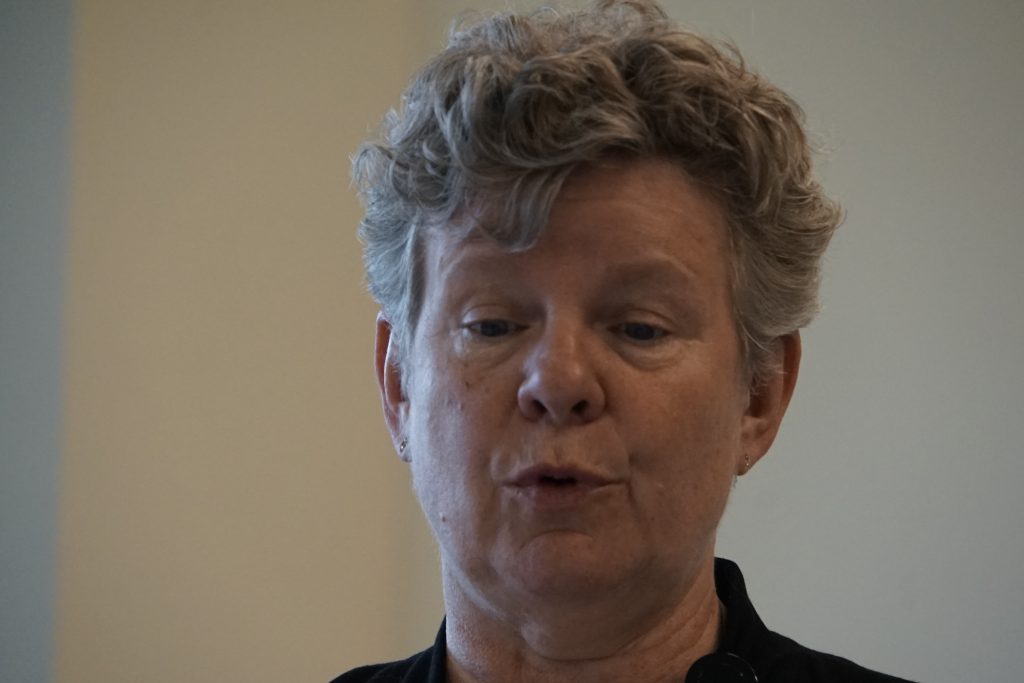
SB: It seems like the county has a handle on the first big question in a pandemic: Do we have enough hospital capacity to meet the need? So far in Santa Cruz County, yes. The number of people with COVID in local hospitals has not been more than five. It hit that number on April 6th.
So, for the first time, the county is stepping toward the next phase in its COVID response. And that means reopening some workplaces.
The next big questions are: What’s the effect on the local economy? And what might the next six months look like?
The answers hinge on our county’s shelter orders.
KMG: We’ll get into some of the details of the revised shelter order. We’ll also hear from two people with a birds-eye view on our local economy: Chris Thornberg. He’s the founding partner of Beacon Economics. He spoke this week at the Monterey Bay Economic Partnership summit. And Casey Beyer. He’s the CEO of the Santa Cruz County Chamber of Commerce. I interviewed him Friday.
SB: For the county’s revised shelter order, we posted a full explanation on our website, at santacruzlocal dot org. And we’ll put the link to that in our show notes.
But in a nutshell, you should know the details of the order It’s expected to change every three weeks
For businesses, non-essential construction and real estate are now allowed. Hospitals are now allowed to do elective procedures as well as preventive medical care. Dentists’ offices can open. Outdoor work, such as landscaping, is allowed.
KMG: Another change was childcare. Childcare was actually already allowed in the previous version of the order. But now, it includes summer camps and day camps.
The county is working with parks and rec departments. They’re trying to get summer camps back in session. They’ll just look different this summer, with groups no larger than 12 children.
SB: The order also impacts tourism.
Santa Cruz County’s order, like the state’s order, still says you’re not supposed to drive anywhere except for essential reasons. That means you’re not supposed to visit anywhere for fun.
Beaches in Santa Cruz County have limited hours now.
Also, to limit visitors, there’s a new rule. Hotels and vacation rentals cannot rent rooms unless it’s for essential travel. These rules are tighter. Before, hotels could rent rooms to anybody without facing possible fines.
KMG: Some residents have called on Santa Cruz County’s health officer to do more to limit out-of-county visitors. They fear more COVID cases in the county.
Dr. Newel, the health officer, said Tuesday that she’s doing all she can, except in terms of publicity. They plan to buy social media ads to discourage visitors, and place signs.
Here’s Dr. Newel speaking at a telephone town hall last week.
DR. GAIL NEWEL: We really can’t legally prevent people from coming to our county. The only way to actually do that is with a health officer order at the state level. That would be a quarantining of the entire county. And not only would it keep people out, but it would also keep us from leaving the county. And I think our residents would have a problem with that too.
SB: While this revised shelter order opens some parts of the economy it still. squeezes tourism.
You probably know that government, education and health are big parts of our county’s economic engine. But there’s actually more jobs in leisure and hospitality. Many of those jobs are seasonal and low paying. That’s according to a 2019 report from the consultant group Beacon Economics.
Here’s Chris Thornberg of Beacon Economics. We’ll play you the first four minutes of his recent keynote address.
CHRIS THORNBERG: Let’s do a little thought experiment for just a second. Imagine that a few days a week after two weeks after the public health mandates have been put into place, some genius scientists have come up with a cure for the virus. I think we can all agree that people would have very quickly all gone back to work. And there would’ve been almost no harm to our economy except for the fact that we had a couple weeks where we couldn’t go out and eat.
In other words, the numbers you’re seeing today are just a reflection of public health mandates. And they will only last as long as public health mandates. As soon as the mandates go away, these jobs come back. This is not, if you will, a traditional recession-causing exercise.
Now, the key here is to understand that while businesses are shut down, while people are unable to work, they’re not earning money. That’s the long-run damage. That’s the damage that will hurt our ability to bounce back in the second half of the year when we get in front of this virus.
Now, how much damage will that create in our economy? No one really knows. And that’s why it’s dangerous to leap to assumptions about this being a very long-term negative downturn in the US economy. We just don’t know.
But if you want to think about it, let’s say this. If you really want to think about how much harm will come out, how much harm is going to be created as a result of these shutdowns, you have to answer five basic questions.
The first question is, how deep are these shutdowns. No. 2 is, how long will it be? No. 3: How healthy was the economy in the first place? No. 4: What’s the government doing in the meantime? And last but not least, will people substantially change their behavior post virus?
Once you answer these questions, then you have a good sense whether this is going to be a ‘U’ or ‘V.’ In our eyes, this mainly lines up to be a ‘V.’ And let me go through my reasoning why.
First of all, how deep? Well, we know of course, that tourism, travel — things that are important to the Monterey Bay Area region — have been completely shut down. However, as much as that’s hurting the local economy, overall, travel and tourism really aren’t a big part of the overall US economy.
And indeed, if you look at the first quarter numbers, believe it or not, a lot, while that part of the economy certainly created some hit to overall growth, it wasn’t the big part of it. In fact, the big part of the slowdown in growth in the first quarter of this year is something that is both good and bad news. It was mainly health care — declines in spending on health care.
And that’s because, of course, in the midst of getting ready for the pandemic, a lot of hospitals, a lot of doctors, either shut down completely or basically cancelled all discretionary procedures. People simply stayed away from the health care system, because everybody was expecting a mad rush of people to be there with the COVID virus who needed desperate, desperate help.
Well guess what, outside of places like Seattle, and of course, New York City, those surges of people never actually showed up. So we didn’t get the positive spending driven by the negative ramifications of this virus. That’s actually relatively good news.
So how deep is this actual downturn? Perhaps not as deep as we might think. Our guess is only 10 to 15% of the economy is actually being shuttered right now. Now, that number
gets big and bigger as time goes on because of supply chain effects.
Which brings me to my second question, how long? Well, yet again, we seem to have some sense that we are in fact, at getting closer to the light at the end of the tunnel.
Look, the number of new cases is falling. And if we look at China or Italy and Spain, we understand this overall is about a three-month hit to production, about a four-month hit to overall consumer spending. That least comes out of the microdata coming from China on a week-to-week basis.
What that all ends up saying to us is, more or less, the second quarter is the center of everything. By the third quarter, most of the mandates should be lifted, and things will be getting back to normal.
Now, I’m not saying the virus is going to be completely eradicated. Of course it won’t. But we’re going to have teams of highly-trained health professionals running around tracking down any new cases and isolating those individuals, so it doesn’t get out of control the way it did this time.
Remember, it got so bad this time largely because we weren’t expecting it. Remember, this was an exercise in ignorance. Even as we were running around telling ourselves everything was fine in February, the first, that first deaths were already occurring.
We only get one Pearl Harbor. We’re much smarter now. And of course, we’re going to be able to keep this thing, really at a minimum over the course of the next couple months.
SB: Maybe his timeline about things getting back to normal by summer sounded a bit too optimistic for you.
Santa Cruz County health officials have said they expect social distancing rules in some form to last 18 to 24 months. Opening up concerts, amusement parks and big sports events — that comes last, officials said.
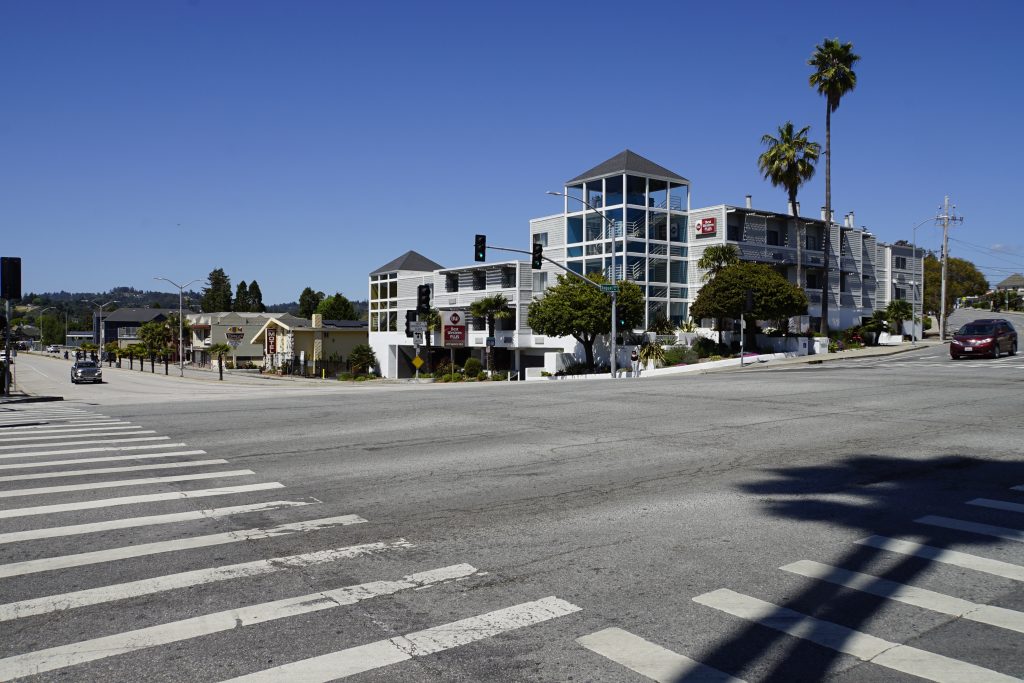
And keep in mind, Santa Cruz County’s economy is different from the rest of the nation’s. Short-term declines in leisure and hospitality are a bigger deal here.
Like the rest of the nation, unemployment claims in Santa Cruz County have jumped. Before the shelter order, in the week of Feb. 13, there were 137 new unemployment claims in the county. The week of March 29, there were more than 8,000 new claims. And there were even more than that in April.
KMG: To get another viewpoint, I talked to Casey Beyer. He’s the CEO of the Santa Cruz County’s chamber of commerce. I asked him what he thought of Thornberg’s outlook.
CASEY BEYER: He may be right that there is a short term of this and that the jobs will return, and I think that as a generality is probably true. But the real question is that a large percentage of the businesses in Santa Cruz County are small. Something like 82% of the businesses in our county have 10 employees or less.
Now the question is how long is the return going to be. Do we know when that is, is it going to be mid summer, late summer, early fall? And in what conditions can a business return to some type of new normal? Well, we don’t know that.
So, the example I’m using is a restaurant. OK, they have to redesign a restaurant so there is social distancing. So lets say your average restaurant in Santa Cruz can seat 50 people. Now you have to restructure that business to be less, probably less than half that to meet the social distancing.
So that means, OK, we can only have so many customers coming in in a period of time. And that means they’re going to have to have new training practices. How do they serve the customer? How is the food prepared? Logically you’d think there’s going to be a reduction somehow. Now, would they figure out a way to do shared hours, so the two employees are working part time instead of two employees working full time? All of that is unknown.
And so to the point of Dr. Thornberg, he says, yeah I think there will be some quick recovery, but then, you know, an example from an organization like mine and others that do events, we don’t know what the rules of the road are.
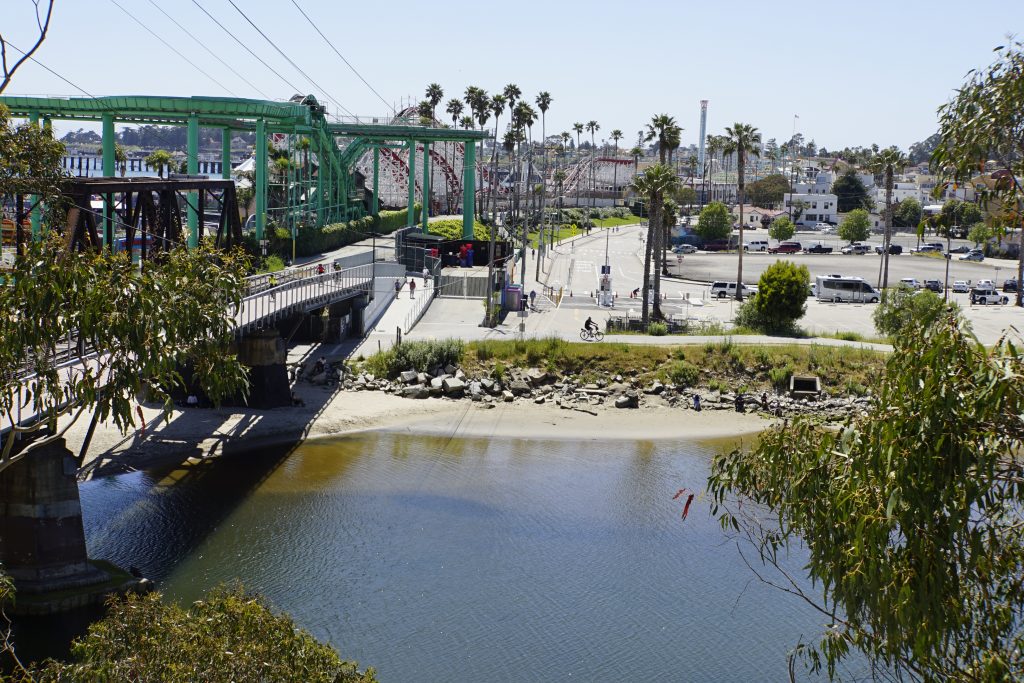
KMG: Picture a typical summer in Santa Cruz County. Triathlons. Packed beaches. Downtown nightlife. Concerts at the boardwalk. That’s all going to look a lot different this year.
CASEY BEYER: One of the most wonderful biggest fun community events that Santa Cruz is known for is the famous Wharf to Wharf race. Well it’s not happening this year. That brings an enormous amount of people that not only run, but enjoy it. You know, you have 19,000 people that come over to participate and run it every year, and a lot of locals.
And it generates a huge amount of revenue, both for Santa Cruz, Santa Cruz County and Capitola, the two destinations on the ends of the Wharf to Wharf.
That is a loss, not only for a spiritual community to really enjoy something, but that’s a loss of economics and the donations and revenue that go to the schools and the athletic programs.
KMG: Beyer seemed to agree with Thornberg that May and June will tell us more about the downturn.
CASEY BEYER: What’s the economic hit to Santa Cruz County? And it’s deep and getting deeper. The trends for the first month or so of the stay-at-home orders show some real crippling of small businesses.
But what’s really the looming factors is that we’re looking at a window of March 19, say, ‘til the first of May and that’s a small sliver of time. When you take a look at the numbers that are hitting, that we won’t know until the end of May when we get into the end of the second quarter. And that is going to be sobering. The hotel industry’s going to take another hit, because of the order that came out.
Right now, when we’re starting to go into the early part of spring and the heavy summer months when the hotel industry is at its peak. Their occupancy rates are in the 80% and then on the weekends they’re full.
Right now, they’re in the low teens and in the single digits in terms of occupancy.
So even knowing that, this restriction further targets their ability to actually employ people and take care of the daily works of a hotel. And I make that comment not lightly. I make it because it’s so critical to the tourism industry, where we have Visit Santa Cruz County, that’s saying hey, come visit Santa Cruz. Now they’re saying, hey, don’t come to Santa Cruz.
And what you’re seeing is people are not coming over here for a weekend stay, they’re coming over here for a day event. And we saw it over the weekend. And of course, the response was, let’s limit the, restrictions to our great beaches. And I think that’s probably appropriate, but it doesn’t address how the local people are impacted.
SB: For businesses that are reopening in our county, there are some new rules in the revised shelter order. As more parts of our economy reopen, this might be a glimpse of how other shops will have to prepare.
For example, shops have to limit the number of customers inside. Customers have to be able to stay 6-feet apart from each other. Signs must be placed outside a shop that tell customers not to enter with a fever. Hand-washing facilities and hand sanitizer must be available for employees.
On construction sites, managers will have to control choke points where workers stand together — places like halls, elevators and break areas.
Construction employees now have to tell their boss if they have someone at home with COVID.
So as we tiptoe toward a reopened economy, perhaps the only certainty is more rules.
[MUSIC]
KMG: This episode was sponsored by UC Santa Cruz. UC Santa Cruz tells its story every other week in its StoryCruz podcast. Listen to conversations about UC Santa Cruz news, research, breakthroughs, people and events. Find StoryCruz on Stitcher, iTunes, and Google Play.
Santa Cruz Local is committed to giving you accurate, up-to-date information about the local response to the coronavirus. We want you to be able to make informed decisions about issues that affect you.
Sign up for our email newsletter to get our latest news. Signup is at santacruzlocal dot org.
About 80% of our revenue comes from memberships. To sustain the future of local news in Santa Cruz County, we depend on support from locals like you. We invite you to join our community of informed and engaged members. Visit santacruzlocal dot org slash membership.
Thank you to all our members. Thank you especially to our guardian level members: Chris Neklason, Patrick Reilly, Elizabeth and David Doolin, and the Kelley Family.
[MUSIC]
Thanks to Trimpot for the music.
I’m Kara Meyberg Guzman
SB: I’m Stephen Baxter .
KMG: Thanks for listening to Santa Cruz Local.
Stephen Baxter is a co-founder and editor of Santa Cruz Local. He covers Santa Cruz County government.
Kara Meyberg Guzman is the CEO and co-founder of Santa Cruz Local. Prior to Santa Cruz Local, she served as the Santa Cruz Sentinel’s managing editor. She has a biology degree from Stanford University and lives in Santa Cruz.

